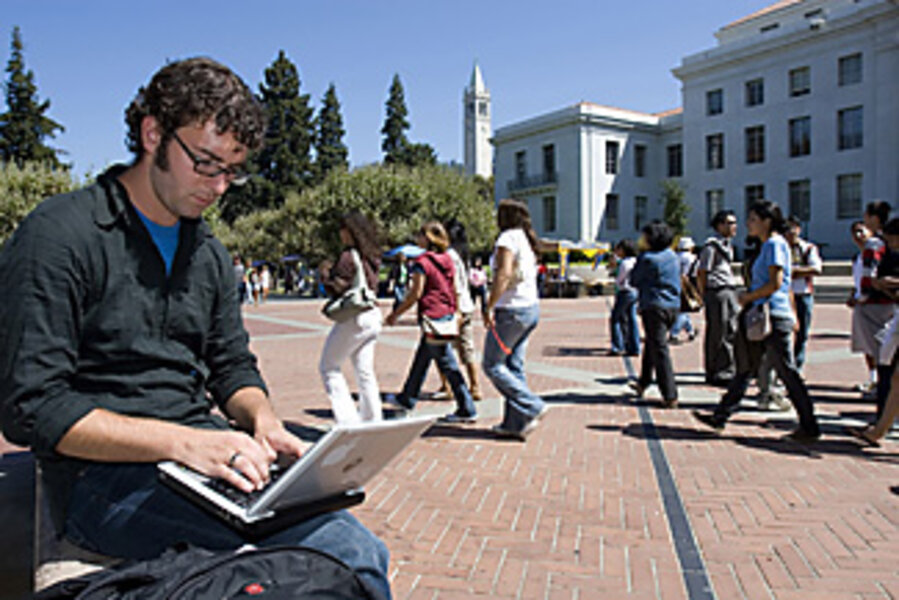Amid loan worries, a silver lining for students
Loading...
The credit crisis has caused many students to worry that they won't get loans for college. But the sky isn't falling, say student aid administrators.
In fact, there may even be a silver lining: The flurry of public attention could prompt some borrowers to find lower-cost options they hadn't realized existed.
"We're hopeful that out of this bad news comes an environment where students ... review all their options ... [and] make sure that they use all their federal aid, state aid, and institutional aid before trying to get private student loans," says Haley Chitty, spokesman for the National Association of Student Aid Administrators.
Nearly half of undergraduate students don't use all the low-cost federal loans they and their families are eligible for before turning to private lenders, according to Consumers Union in Yonkers, N.Y.
Some students experience gaps between government aid and their expenses at school. For them, the credit crunch could mean higher rates or even a delay in their education if they have trouble qualifying for private loans as criteria become more stringent. But others may just be intimidated by the complicated federal aid application and instead turn to an easy-to-access private loan they've seen advertised. And parents sometimes don't realize they can take out low-cost loans to cover their student's expenses. Federal loans are currently fixed at 6.8 percent. Private rates can be twice as high.
In 2006-07, Americans borrowed $77 billion dollars to finance college and graduate school, and 24 percent came from nonfederal loans, according to the College Board. That was up from 13 percent in 2001-02.
But among undergraduates, only about 1 in 10 use private loans – and within that, only 10 percent are in the subprime category that's most affected by the credit crunch, says Robert Shireman, executive director of the Project on Student Debt in Berkeley, Calif. In the federal loan system, where the bulk of students borrow, he says, "we have some pretty secure and impressive backstops ... to make sure there's loan availability."
Congressional education committees have urged Secretary of Education Margaret Spellings to make sure those "backstops" are ready if needed. Under a lender-of-last-resort provision, 35 guaranty agencies would be obligated to serve as lenders if any problem arose. But that's never been implemented before, and requires work to be made operational.
Financial aid officers are eager to help students sort through confusing news. At the University of New Hampshire in Durham, about 45 percent of the 2,700 students who use nonfederal loans have to find new options after the recent termination of the private Loan for Educational Assistance Funding. Financial aid director Suzy Allen says it will be "a bit tougher" for students to get such loans now if they have no credit history or low credit and no cosigner.
The situation is more alarming for members of the Career College Association, which caters in part to low-income adults, says president Harris Miller. Just over half the members have heard from lenders who will no longer grant nonfederal loans to their students.
A bigger issue, he says, is that federal loan caps haven't increased at the same pace as college costs, prompting more students to rely on private loans.
This tempest may help policymakers gain "a better realization of the amount of debt low-income kids are taking on," says Bob Giannino-Racine, executive director of ACCESS, a financial-aid and advising nonprofit in Boston. He urges low-income students to consider public schools, but some insist on a private college. Once they are accepted, "they're really going to try to figure out how to get there," he says, with some taking on debts of $30,000 to do it.





